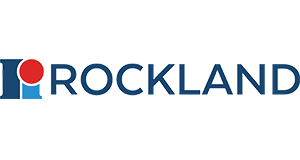Rabbit ''B'' (1-2 Lbs.) Complement (Lyophilized) With Diluent
Rabbit ''B'' (1-2 Lbs.) Complement (Lyophilized) With Diluent
SKU
ROCC203-0005
Packaging Unit
5 mL
Manufacturer
Rockland
Availability:
loading...
Price is loading...
Application Note: pH: normalImmunoelectrophoresis: normalHemoglobin: normalIgG Concentration: normalImmunoelectrophoresis: normal
Concentration Value: 85 mg/mL
General Disclaimer Note: This product is for research use only and is not intended for therapeutic or diagnostic applications. Please contact a technical service representative for more information. All products of animal origin manufactured by Rockland Immunochemicals are derived from starting materials of North American origin. Collection was performed in United States Department of Agriculture (USDA) inspected facilities and all materials have been inspected and certified to be free of disease and suitable for exportation. All properties listed are typical characteristics and are not specifications. All suggestions and data are offered in good faith but without guarantee as conditions and methods of use of our products are beyond our control. All claims must be made within 30 days following the date of delivery. The prospective user must determine the suitability of our materials before adopting them on a commercial scale. Suggested uses of our products are not recommendations to use our products in violation of any patent or as a license under any patent of Rockland Immunochemicals, Inc. If you require a commercial license to use this material and do not have one, then return this material, unopened to: Rockland Inc., P.O. BOX 5199, Limerick, Pennsylvania, USA.
Physical State: Lyophilized
Purity and Specificity: The complement system consists of a number of small proteins found in the blood, generally synthesized by the liver, and normally circulating as inactive precursors (pro-proteins). When stimulated by one of several triggers, proteases in the system cleave specific proteins to release cytokines and initiate an amplifying cascade of further cleavages. The end-result of this activation cascade is massive amplification of the response and activation of the cell-killing membrane attack complex. Over 25 proteins and protein fragments make up the complement system, including serum proteins, serosal proteins, and cell membrane receptors. They account for about 5% of the globulin fraction of blood serum.
Background: The rabbit complement system helps or “complements” the ability of antibodies and phagocytic cells to clear pathogens from an organism. Complement is part of the innate immune system that is not adaptable and does not change over the course of an individual's lifetime. Complement can be recruited and brought into action by the adaptive immune system.The following are basic functions of complement: 1. Opsonization - enhancing phagocytosis of antigens 2. Chemotaxis - attracting macrophages and neutrophils 3. Cell Lysis - rupturing membranes of foreign cells 4. Clumping of antigen-bearing agents
Low Endotoxin: No
Other: User Optimized
Concentration Value: 85 mg/mL
General Disclaimer Note: This product is for research use only and is not intended for therapeutic or diagnostic applications. Please contact a technical service representative for more information. All products of animal origin manufactured by Rockland Immunochemicals are derived from starting materials of North American origin. Collection was performed in United States Department of Agriculture (USDA) inspected facilities and all materials have been inspected and certified to be free of disease and suitable for exportation. All properties listed are typical characteristics and are not specifications. All suggestions and data are offered in good faith but without guarantee as conditions and methods of use of our products are beyond our control. All claims must be made within 30 days following the date of delivery. The prospective user must determine the suitability of our materials before adopting them on a commercial scale. Suggested uses of our products are not recommendations to use our products in violation of any patent or as a license under any patent of Rockland Immunochemicals, Inc. If you require a commercial license to use this material and do not have one, then return this material, unopened to: Rockland Inc., P.O. BOX 5199, Limerick, Pennsylvania, USA.
Physical State: Lyophilized
Purity and Specificity: The complement system consists of a number of small proteins found in the blood, generally synthesized by the liver, and normally circulating as inactive precursors (pro-proteins). When stimulated by one of several triggers, proteases in the system cleave specific proteins to release cytokines and initiate an amplifying cascade of further cleavages. The end-result of this activation cascade is massive amplification of the response and activation of the cell-killing membrane attack complex. Over 25 proteins and protein fragments make up the complement system, including serum proteins, serosal proteins, and cell membrane receptors. They account for about 5% of the globulin fraction of blood serum.
Background: The rabbit complement system helps or “complements” the ability of antibodies and phagocytic cells to clear pathogens from an organism. Complement is part of the innate immune system that is not adaptable and does not change over the course of an individual's lifetime. Complement can be recruited and brought into action by the adaptive immune system.The following are basic functions of complement: 1. Opsonization - enhancing phagocytosis of antigens 2. Chemotaxis - attracting macrophages and neutrophils 3. Cell Lysis - rupturing membranes of foreign cells 4. Clumping of antigen-bearing agents
Low Endotoxin: No
Other: User Optimized
| SKU | ROCC203-0005 |
|---|---|
| Manufacturer | Rockland |
| Manufacturer SKU | C203-0005 |
| Package Unit | 5 mL |
| Quantity Unit | STK |
| Conjugate | Unconjugated |
| Product information (PDF) | Download |
| MSDS (PDF) |
|

 Deutsch
Deutsch






